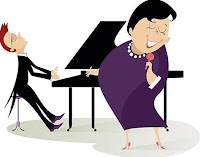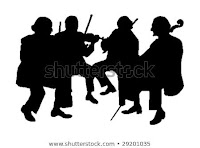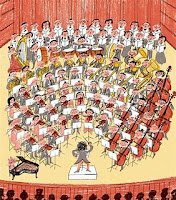INTRODUCTION

 We pianists are both blessed and cursed. On the one hand we glory in the totality of musical possibility, controlling as we do
We pianists are both blessed and cursed. On the one hand we glory in the totality of musical possibility, controlling as we do
massive sonorities. We can be the entire string quartet, the singer and accompanist, the full orchestra. We learn at an early age to be horizontalists, the producers of a musical line. We learn that music exists in time and travels logically from point A to points farther along an horizontal continuum. This is all good.
 On the other hand, when confronted with competing horizontal lines, we are called upon to rethink our predilection for spinning a single line beautifully to the right. Students suffer the shock of having to abandon preconceived notions of technique, at least for the amount of time it takes to organize more than one line traveling together at the same time along the same continuum. Yes, and to some this may seem sacrilege, but we must think more vertically.
On the other hand, when confronted with competing horizontal lines, we are called upon to rethink our predilection for spinning a single line beautifully to the right. Students suffer the shock of having to abandon preconceived notions of technique, at least for the amount of time it takes to organize more than one line traveling together at the same time along the same continuum. Yes, and to some this may seem sacrilege, but we must think more vertically.
Mastering contrapuntal playing at the piano is about physical coordination. What do the two hands feel like at crucial points
where the multiple voices come together vertically? Since the piano is down—we play down into the key—the feeling where voices come together is a combined down. I know, this flies in the face of our notion that music moves laterally.
Bach was a teacher. In his day, teaching was not only about keyboard facility, but included elements of composition and style. In short, Bach taught music. In his preface to the Inventions and Sinfonias, he explains that he has created an “honest method” for the purpose of learning to play “clearly” first two parts, then three
parts. Along the way he hoped the “amateur” would develop, in addition to the ability to handle all the parts well, “good ideas.” He writes that “above all” the player should “achieve a cantabile style in playing and acquire a strong foretaste of composition.”
Let’s talk about cantabile. This is my favorite Bach quote. I raise it whenever I encounter a pianist who attempts a harpsichord facsimile on the modern piano. You know the type of player I mean. This is someone who feels that all Bach playing is detached. (More about articulation later.) Even the great harpsichordist Wanda Landowska declared that her playing was connected, not detached. I understand why some pianists do this. They hope to imitate the quill plucking the strings. In the process they discard the natural reverberation that plucking produces.
We know that Bach favored the clavichord for its ability to
produce nuanced inflections, not unlike a piano, though very much more subtle. The clavichord was an entre nous instrument, its sound intimate and not designed for a modern concert hall. It seems to me Bach had this reference in mind when he wrote that his music should be expressive in the way that singing can be expressive. In the above-referenced preface Bach gives us leave to use the resources of the piano.
So here we have a conundrum. On the one hand we are to play the parts clearly, but at the same time be expressive. No worries. We can separate out the two parts of the puzzle and put them back together again. Bach would be proud.
To be continued...

 We pianists are both blessed and cursed. On the one hand we glory in the totality of musical possibility, controlling as we do
We pianists are both blessed and cursed. On the one hand we glory in the totality of musical possibility, controlling as we do massive sonorities. We can be the entire string quartet, the singer and accompanist, the full orchestra. We learn at an early age to be horizontalists, the producers of a musical line. We learn that music exists in time and travels logically from point A to points farther along an horizontal continuum. This is all good.
 On the other hand, when confronted with competing horizontal lines, we are called upon to rethink our predilection for spinning a single line beautifully to the right. Students suffer the shock of having to abandon preconceived notions of technique, at least for the amount of time it takes to organize more than one line traveling together at the same time along the same continuum. Yes, and to some this may seem sacrilege, but we must think more vertically.
On the other hand, when confronted with competing horizontal lines, we are called upon to rethink our predilection for spinning a single line beautifully to the right. Students suffer the shock of having to abandon preconceived notions of technique, at least for the amount of time it takes to organize more than one line traveling together at the same time along the same continuum. Yes, and to some this may seem sacrilege, but we must think more vertically. Mastering contrapuntal playing at the piano is about physical coordination. What do the two hands feel like at crucial points
where the multiple voices come together vertically? Since the piano is down—we play down into the key—the feeling where voices come together is a combined down. I know, this flies in the face of our notion that music moves laterally.
Bach was a teacher. In his day, teaching was not only about keyboard facility, but included elements of composition and style. In short, Bach taught music. In his preface to the Inventions and Sinfonias, he explains that he has created an “honest method” for the purpose of learning to play “clearly” first two parts, then three
parts. Along the way he hoped the “amateur” would develop, in addition to the ability to handle all the parts well, “good ideas.” He writes that “above all” the player should “achieve a cantabile style in playing and acquire a strong foretaste of composition.”
Let’s talk about cantabile. This is my favorite Bach quote. I raise it whenever I encounter a pianist who attempts a harpsichord facsimile on the modern piano. You know the type of player I mean. This is someone who feels that all Bach playing is detached. (More about articulation later.) Even the great harpsichordist Wanda Landowska declared that her playing was connected, not detached. I understand why some pianists do this. They hope to imitate the quill plucking the strings. In the process they discard the natural reverberation that plucking produces.
We know that Bach favored the clavichord for its ability to
 |
| Clavichord |
So here we have a conundrum. On the one hand we are to play the parts clearly, but at the same time be expressive. No worries. We can separate out the two parts of the puzzle and put them back together again. Bach would be proud.
To be continued...


No comments:
Post a Comment